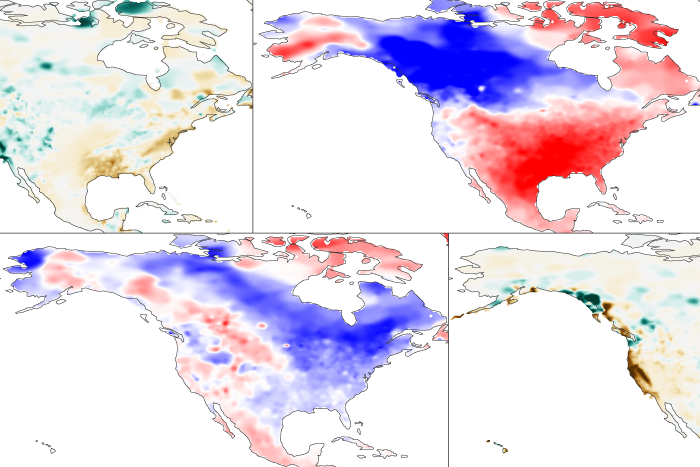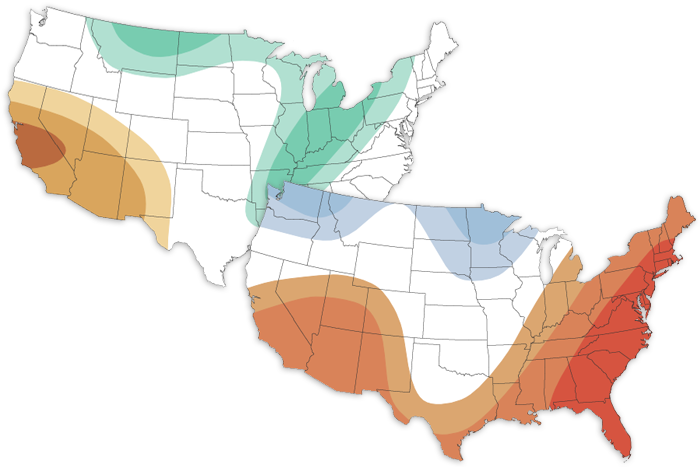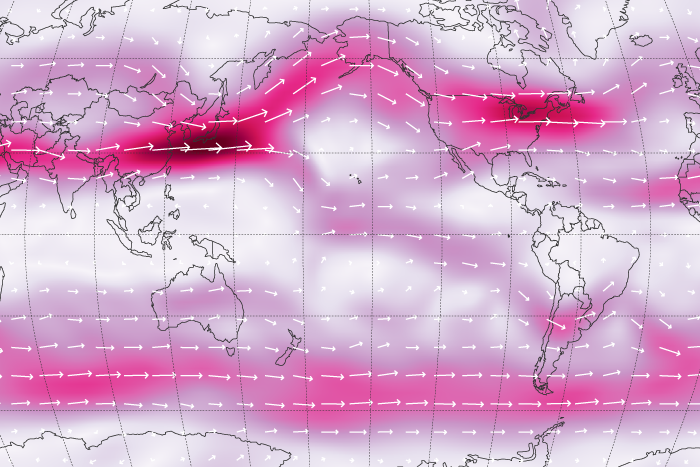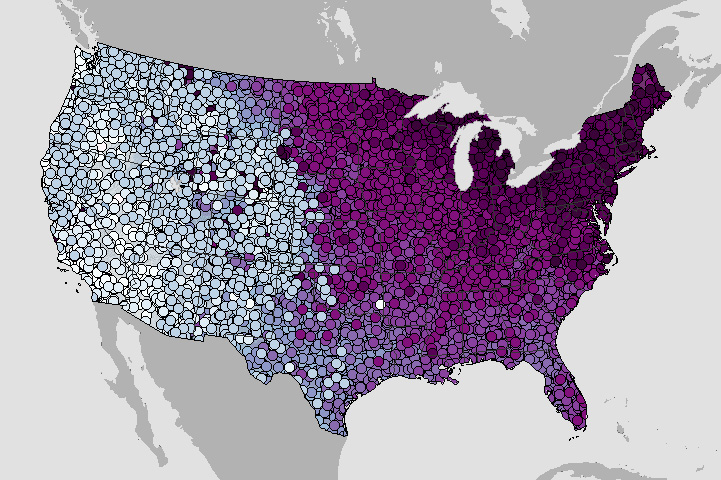How do El Niño and La Niña affect atmospheric rivers?
It was the sixth-warmest year on record for planet Earth.

Hop in as our ENSO blogger takes you on a road trip through the February 2022 ENSO forecast.
The month brought a warm West and a cold East. Amid widespread dryness, wetter-than-average conditions occurred in Colorado, the Ohio Valley, and the Mid-Atlantic.

The February 2022 climate outlook favors warmer-than-average temperatures across the southern and eastern U.S., with cooler and wetter conditions favored across the north. Out West, a drier-than-average month is forecast.

A high-level explainer of the jet stream. (Ha ha..."high-level"...get it?)
Second-highest in number and third-highest in costs, 2021 was another extreme year for weather and climate disasters in the United States.

Does your location usually experience its coldest day of the year in early, mid, or late winter? Find an answer with this map based on weather observations between 1991-2020.
It's been 45 years since the planet had a cooler-than-average year.
La Niña is likely near its peak strength, but that doesn't mean its impacts will disappear anytime soon.